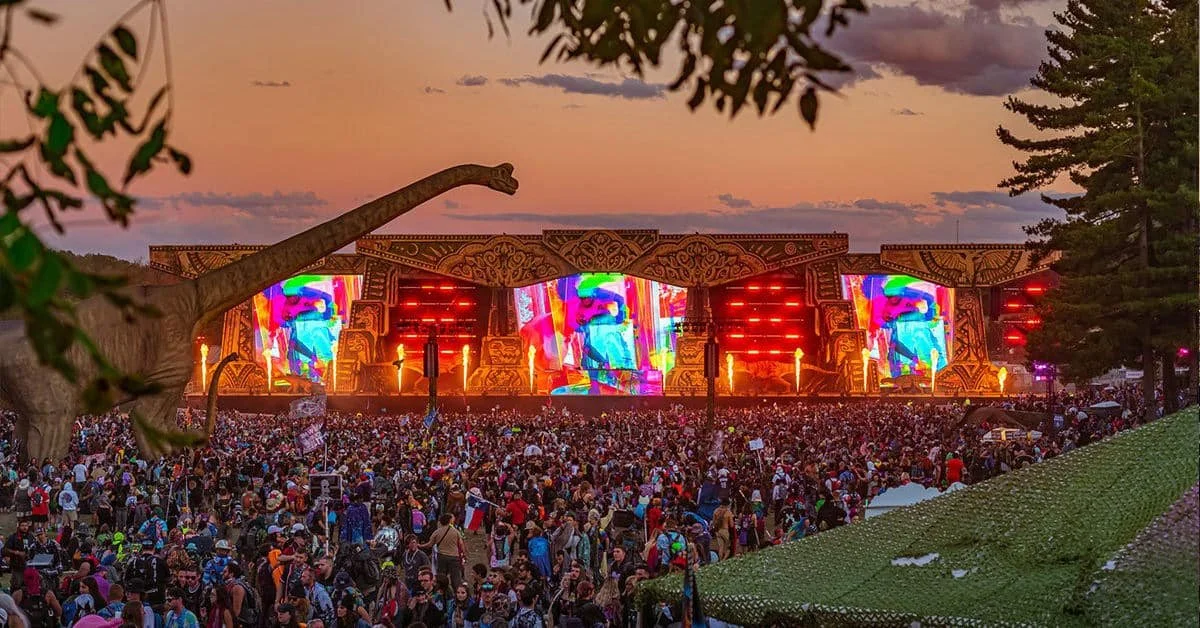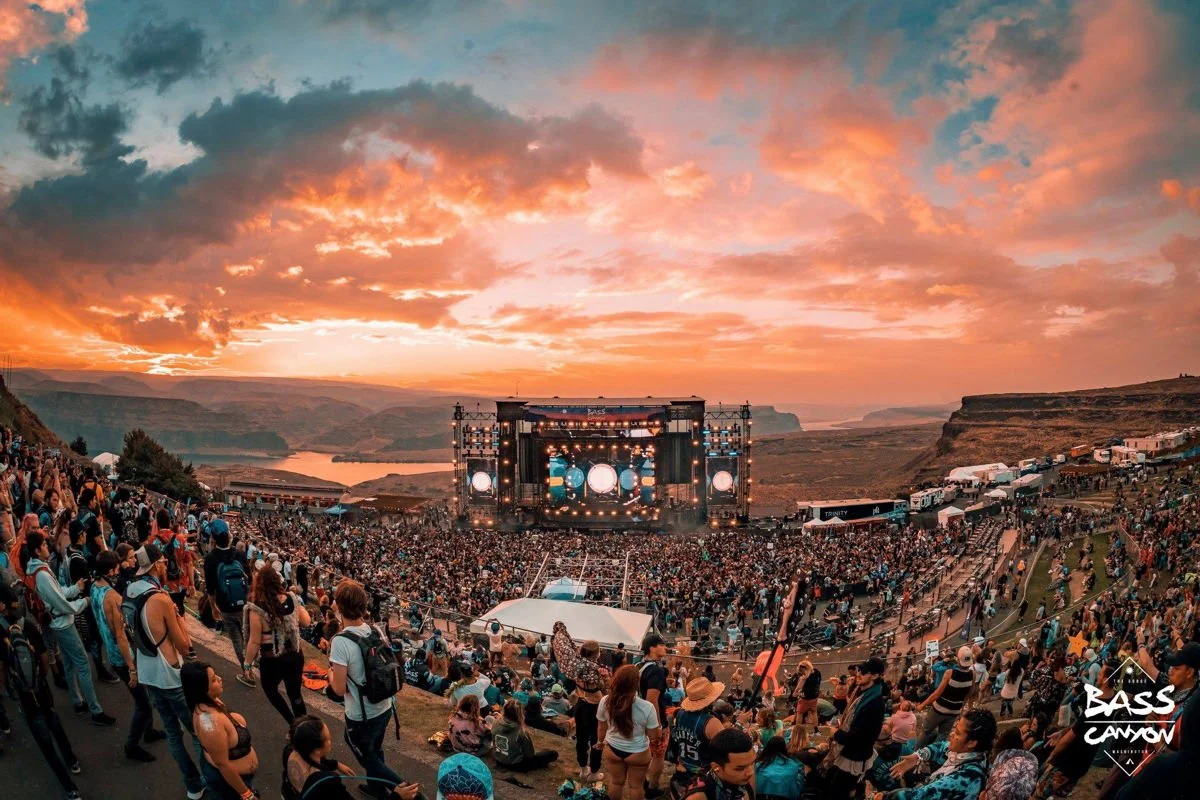Learn About Dubstep Music
History of Dubstep
Dubstep is a genre of electronic dance music (EDM) that originated in South London in the late 1990s. Characterized by its syncopated rhythms, heavy basslines, dark atmospheres, and sparse arrangements, dubstep has evolved significantly over the past few decades, influencing mainstream pop, hip-hop, and various subgenres of EDM.
Roots in UK Garage and Dub
The roots of dubstep can be traced back to the UK garage scene of the mid-to-late 1990s. UK garage itself evolved from American house music and jungle, characterized by shuffled beats and chopped vocal samples. A darker, more minimal offshoot of garage began to emerge in South London, where producers and DJs started experimenting with moodier, bass-heavy tracks. These tracks were often influenced by dub reggae, a genre pioneered in Jamaica in the 1970s that emphasized reverb-heavy production and sub-bass.
Key producers like El-B, Steve Gurley, and Horsepower Productions helped develop this darker, more experimental sound. They incorporated elements of 2-step, breakbeat, and dub to create something that stood apart from the more soulful and vocal-driven UK garage. Around 2000–2002, these experimental sounds began to coalesce into what would be called dubstep.
The Birth of Dubstep (Early 2000s)
The term "dubstep" is widely believed to have first appeared around 2002, when a UK label called Big Apple Records, based in Croydon, South London, began categorizing this emerging style. The store and label became a central hub for producers like Skream, Benga, Hatcha, and Digital Mystikz (Mala and Coki), who would go on to become pioneers of the genre.
During this time, pirate radio stations like Rinse FM and clubs such as Forward>> (FWD>>) in London were crucial in giving dubstep a live platform. FWD>>, which began in 2001 at Plastic People nightclub, provided a space for DJs to experiment and test their new productions in front of devoted audiences. The club’s powerful sound system and open-minded crowd allowed dubstep to grow organically.
The Dark and Minimal Era
From 2002 to 2005, dubstep was defined by a dark, minimalist aesthetic. Tracks like Skream’s “Midnight Request Line”(2005) introduced wider audiences to the genre’s deep, hypnotic rhythms and cavernous bass. Mala and Coki's Digital Mystikz tracks emphasized spiritual, roots-influenced vibes. Loefah, another DMZ artist, pushed a more stripped-back sound with massive sub-bass and stark, slow rhythms.
In 2005, the DMZ club night—founded by Mala, Coki, Loefah, and Sgt Pokes—launched in Brixton, providing a new focal point for the scene. The first event only drew about 200 people, but its influence was massive. By the second party, demand had grown so much that the venue had to be moved to a larger space.
Dubstep Goes Global (Late 2000s)
By 2006–2007, dubstep began to attract international attention. Blogs, YouTube uploads, and online radio shows helped spread the sound beyond the UK. Artists like Burial added new emotional and textural layers to dubstep. His 2007 album Untrue, released on Hyperdub, blended atmospheric soundscapes with crackling vocal samples and ghostly ambiance. Untrue received widespread critical acclaim and introduced dubstep to a more indie and experimental audience.
Dubstep also caught on in Europe and North America. Labels like Tempa, Hyperdub, and Deep Medi Musik exported the UK sound. Dubstep parties began appearing in cities like New York, Berlin, and San Francisco. DJs such as Mary Anne Hobbs, a BBC Radio 1 host, championed dubstep on a global scale, curating influential compilations and introducing the genre to new fans.
The American “Brostep” Explosion (2010s)
As dubstep reached American shores, the sound began to shift. Producers like Skrillex, Excision, Zomboy, and Datsik helped forge a more aggressive, high-energy version of dubstep often dubbed “brostep.” This sub-style retained the core elements of dubstep—wobbly basslines, halftime rhythms—but amped up the intensity with metallic synths, loud drops, and glitchy textures.
Skrillex’s Scary Monsters and Nice Sprites (2010) was a breakthrough moment. The EP went viral, won multiple Grammy Awards, and pushed dubstep into the mainstream. His signature sound design and headbanging rhythms helped redefine what dubstep meant to a global audience—especially in the U.S., where the genre became synonymous with festival anthems and massive drops.
While brostep was divisive—many purists saw it as a betrayal of dubstep’s original dark, minimal ethos—it undoubtedly played a major role in popularizing the genre on a mass scale.
Backlash and Diversification
As dubstep’s popularity grew in the early 2010s, some of the original UK producers began to distance themselves from the new wave of commercialized sound. The dubstep scene fragmented into substyles and hybrids: future garage, post-dubstep, riddim, trap-dubstep, and more.
Artists like James Blake, Mount Kimbie, and SBTRKT explored more melodic, soulful, and abstract approaches—leading to a softer, more introspective sound sometimes referred to as post-dubstep. Meanwhile, the harder edges of dubstep evolved into riddim, a more repetitive and minimal offshoot embraced by a new generation of fans on platforms like SoundCloud and TikTok.
Labels such as Disciple, Never Say Die, and Subcarbon continued to nurture aggressive bass music, while events like Lost Lands, Bass Canyon, and Rampage catered to a growing global dubstep fanbase.
The Current Landscape
In the 2020s, dubstep remains a vibrant and evolving scene. The genre is no longer confined to a single style—it now spans deep dubstep, riddim, hybrid trap, and experimental bass music. Artists like Subtronics, SVDDEN DEATH, and Rezz continue pushing boundaries, while legacy acts such as Skream and Mala enjoy renewed appreciation.
Thanks to digital platforms, dubstep is now both niche and mainstream, underground and commercial. Communities on YouTube, Discord, and Reddit keep the culture alive, while live events remain key to the genre’s energy. Whether it's an underground night in London or a massive U.S. bass festival, dubstep continues to thrive.
Subgenres of Dubstep
Main Subgenres of Dubstep
Brostep
Top DJ’s: Skrillex, Subtronics, SVDDEN DEATH, Virtual Riot, Excision
Sound: Loud, aggressive, metallic synths, massive drops, mid-range dominance
Signature Tracks:
Zomboy – "Terror Squad" (2013)
Knife Party – "Centipede" (2012)
Kill the Noise – "Kill It 4 The Kids" (2015)
Riddim
Top DJ’s: Subtronics, Marauda, INFEKT, OG Nixin, Monxx
Sound: Repetitive, minimal, syncopated rhythms, often 140 BPM
Signature Tracks:
Subtronics – “Now That’s What I Call Riddim Vol. 5” (2018)
Marauda (fka Mastadon) – “Rage Room” (2018)
INFEKT – “Orgalorg” (2017)
Melodic Dubstep
Top DJ’s: Seven Lions, Trivecta, Illenium, MitiS, Crystal Skies
Sound: Lush synths, big emotional builds, epic drops, often features vocals
Signature Trackss:
Seven Lions & Illenium ft. HALIENE – “Rush Over Me” (2016)
Illenium ft. Jon Bellion – “Good Things Fall Apart” (2019)
Trivecta – “Talk” (2021)
Classic Dubstep (OG/UK Dubstep)
Pioneers: Skream, Benga, Digital Mystikz, Loefah
Sound: Dark, minimal, sub-bass-heavy, influenced by UK garage and dub reggae
Signature Tracks:
Distance – "Night Vision" (2006)
The Bug ft. Warrior Queen – "Poison Dart" (2008)
Benga & Coki – "Night" (2007)
Deep Dubstep
Top DJ’s: Truth, Gantz, J:Kenzo, Sleeper, Hebbe
Sound: Atmospheric, meditative, sub-driven, influenced by dub techno and tribal elements
Signature Tracks:
Mala – “Changes” (2006)
J:Kenzo – “Ruffhouse” (2012)
Gantz – “Space Horror” (2014)
Future Bass (Not technically dubstep, but heavily overlaps)
Top DJ’s: Flume, San Holo, Illenium, Louis the Child, What So Not
Sound: Lush, wavy, melodic, emotional, bright, glitchy, euphoric, spacious.
Signature Tracks:
Flume – “Never Be Like You” (2016)
San Holo – “Light” (2016)
Illenium – “Fractures” (2017)
Color Bass
Top DJ’s: Chime, Skybreak, Ace Aura, Oolacile, Rohaan
Sound: Bright, melodic synths with glitchy “colorful” bass design
Signature Tracks:
Chime – “Here We Go” (2019)
Ace Aura & TYNAN – “Stay” (2021)
Papa Khan – “Rain” (2020)
Tearout
Top DJ’s: FuntCase, SVDDEN DEATH, Marauda, Midnight Tyrannosaurus Figure
Sound: Harsh, gritty, aggressive, noisy
Signature Tracks:
FuntCase – “Gorilla Flex” (2013)
SVDDEN DEATH – “Behemoth” (2018)
Marauda – “Rage Room” (2020)
Deathstep
Top DJ’s: Code: Pandorum/INHUMAN, Marauda, Lord Swan3x, TenGraphs, MONXX
Sound: Fusion of dubstep and death metal—growls, distortion, brutal drops
Signature Tracks:
Code: Pandorum – The Lovecraftian Horrors (2015)
TenGraphs & Code: Pandorum - Horrors (2018)
Lord Swan3x – “Death Bringer” (2018)
Hybrid Trap
Top DJ’s: TYNAN, Ruvlo, Blurrd Vzn, ATLiens, Herobust,
Sound: Trap fused with dubstep sound design, often 808-heavy
Signature Tracks:
Herobust – “Vertebreaker” (2017)
TYNAN – “Diggid” (2018)
ATLiens & TYNAN – “Malfunction” (2019)
Trapstep (Dubstep-Trap Fusion)
Top DJ’s: RL Grime, TroyBoi, UZ, Flosstradmus, Baauer
Sound: 808s, trap snares with dubstep drops, slower BPM (~70/140)
Signature Tracks:
RL Grime – Core (2014)
Flosstradamus – “Rollup (Baauer Remix)” (2012)
Baauer – “Harlem Shake” (2012)
Post-Dubstep
Top DJ’s: James Blake, Mount Kimbie, SBTRKT, Koreless, Jamie xx
Sound: Experimental, soulful, melodic, introspective, blurred lines with ambient & indie
Signature Tracks:
James Blake – “Retrograde” (2013)
Jamie xx – “Gosh” (2015)
FKA twigs – “Two Weeks” (2014)
Specialized & Experimental Styles
Midtempo Bass
Top DJ’s: Rezz, Gesaffelstein, Drezz, LSDream, 1788-L
Sound: Slower (90–110 BPM), dark, hypnotic, mechanical
Signature Tracks:
Rezz – “Edge” (2016)
Gesaffelstein – “Pursuit” (2013)
LSDREAM – “Shadow Self” (2018)
Future Garage
Top DJ’s: Sorrow, Vacant, Koresma, Luca Lush, Cabu
Sound: Shuffling rhythms, ambient pads, emotional atmospheres
Signature Tracks:
Neurostep
Top DJ’s: Culprit, KOAN Sound, Reso, Frequent, COPYCATT
Sound: Clean sound design, fast modulation, neurofunk-inspired
Signature Tracks:
Culprate – “Nightmares in Reality” (2012)
Reso – “War Machine” (2010)
KOAN Sound – “Tetsuo’s Redemption” (2013)
Glitchstep
Top DJ’s: KOAN Sound, Tipper, ill.Gates, The Glitch Mob, Haywire
Sound: Glitchy, syncopated rhythms with dubstep tempo
Signature Tracks:
KOAN Sound – “Funk Blaster” (2011)
Tipper – “Cinder Cone” (2014)
The Glitch Mob – “We Can Make the World Stop” (2011)
Swingstep / Jazzstep
Top DJ’s: Gramatik, Parov Stelar, CloZee, Haywire, Griz
Sound: Bouncy, jazzy, bass-heavy, glitchy, funky, syncopated, soulful, groovy, unpredictable, smooth.
Signature Tracks:
Gramatik – “Just Jammin’” (2012)
Parov Stelar – “Booty Swing” (2010)
GRiZ – “Smash the Funk” (2012)
Chillstep
Top DJ’s: Blackmill, CMA, Phaeleh, Sappheiros, AK
Sound: Relaxed, ambient, often instrumental with cinematic or downtempo vibes
Signature Tracks:
Blackmill – “Let It Be” (feat. Veela) (2011)
Phaeleh – “Afterglow” (2010)
CMA – “You're Not Alone” (2013)
Reggae Dubstep (Dubwise Dubstep)
Top DJ’s: Digital Mystikz, Radikal Guru, Vibronics, RSD, Iration Steppas
Sound: Heavy bass, dub echoes, skanking rhythms, conscious vibes, spiritual sound system.
Signature Tracks:
BlackDigital Mystikz – “Anti War Dub” (2006)
Radikal Guru – “Kingston Town” (2011)
RSD – “Pretty Bright Light” (2008)
Minimal Dubstep
Top DJ’s: Loofah, Mala, J:Kenzo, Distance, Kromestar
Sound: Sparse, sub-heavy, hypnotic, spacious, dark, dub-rooted, slow-burning groove.
Signature Tracks:
Loefah – “Mud” (2006)
Mala – “Changes” (2006)
J:Kenzo – “The Roteks” (2011)
Dubstep Festivals
Lost Lands (USA – Ohio)
The most dubstep-focused festival in the world. Founded by Excision, it features every major bass artist across riddim, brostep, tearout, and more.
Time of year: September
Rampage (Belgium – Antwerp)
Europe’s largest drum & bass and dubstep festival. Known for insane visuals, LED walls, and top-tier production.
Time of year: July
Bass Canyon (USA – Washington State)
Another Excision-curated festival, held at the iconic Gorge Amphitheatre. More scenic than Lost Lands but equally stacked with heavy bass.
Time of year: August
Shambhala (Canada – British Columbia)
A legendary Canadian festival with a deep dubstep and experimental bass culture. The Village Stage is iconic in the bass world.
Time of year: July
Let It Roll (Czech Republic)
While primarily a drum & bass festival, it often features dubstep artists and draws the same underground bass crowd.
Time of year: July






